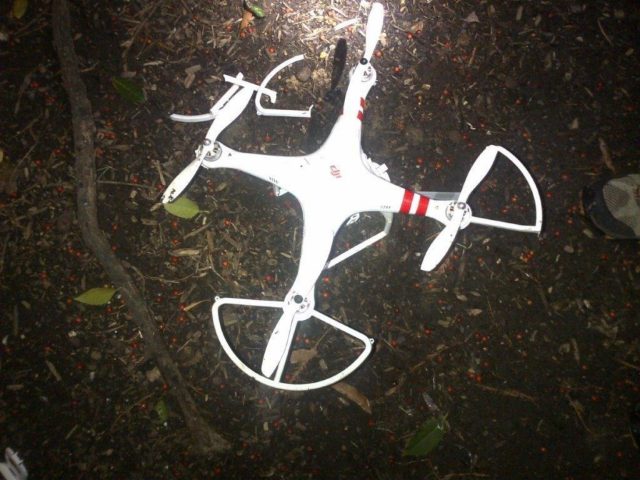
In the wake of a National Geospatial-Intelligence Agency employee’s late-night drunken mischief with a DJi Phantom 2 consumer quadrocopter drone over White House airspace, President Barack Obama called for new laws to govern the use of unmanned aerial vehicles. Meanwhile, the company that manufactured the drone used in the ill-fated flight has announced that it will issue a mandatory upgrade to the firmware for its Phantom 2 line of products to make sure that customers comply with the FAA’s no-fly zone around DC.
In a press release issued this morning, DJI announced that the firmware update “will help users comply with the FAA’s Notice to Airmen (NOTAM) 0/8326, which restricts unmanned flight around the Washington, DC metropolitan area.The updated firmware (V3.10) will be released in the coming days and adds a No-Fly Zone centered on downtown Washington, DC and extends for a 25 kilometer (15.5 mile) radius in all directions. Phantom pilots in this area will not be able to take off from or fly into this airspace.”
DJI’s Phantom 2 drones already have firmware settings that prevent them from being flown near airports and other places where officials have set restrictions on flight. According to the company’s statement, DJI is also continuing to update the no-fly zone list for future firmware releases to prevent flights in other sensitive areas—and to prevent drones from being flown across national borders.
In an interview with CNN, President Obama said after the White House incident that "We don’t yet have the legal structures and the architecture both globally and within individual countries to manage [drones] the way that we need to. I’ve assigned some of the relevant agencies to start talking to stakeholders and figure out how we’re going to put an architecture in place that makes sure that these things aren’t dangerous and that they’re not violating people’s privacy.”
In response to the president’s remarks, Bob Brown, the president of the Academy of Model Aeronautics—an association that lobbies and advises the FAA on the regulation of small unmanned aircraft—said that more regulation isn’t the answer. “The Washington, DC, airspace is some of the most heavily regulated airspace in the world,” Brown noted, “and all aircraft operations are currently prohibited in the vicinity of the White House. Despite the existing regulations, a quadcopter still made its way onto the White House lawn this week.”
Brown said that the best solution was better community education on safety and standards, adding that the FAA’s recent interpretation of the Special Rules for Model Aircraft “has complicated our working relationship, but it is our hope that the agency will work with us to forge a path forward for the recreational community that finds common ground on the Interpretive Rule and leverages AMA’s deep expertise when it comes to safe and responsible flying.”
That interpretation by the FAA essentially places all flight of unmanned aircraft through the use of first-person video or other means that don’t rely on direct observation outside of the “model aircraft” categorization—essentially banning it. The interpretation also restricts any commercial or “business” use of unmanned small aircraft, including the use of small unmanned aircraft in search and rescue operations by non-governmental organizations. An order to a Texas-based search-and rescue team was found to be not binding by a US appeals court because it was sent via e-mail.
reader comments
130